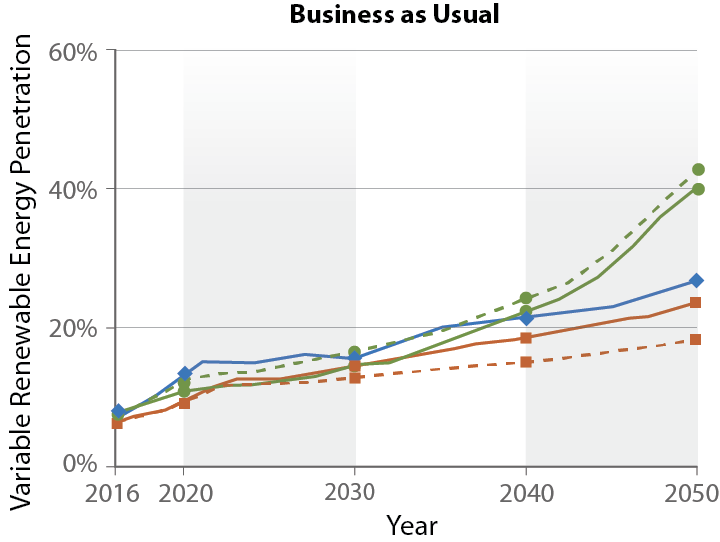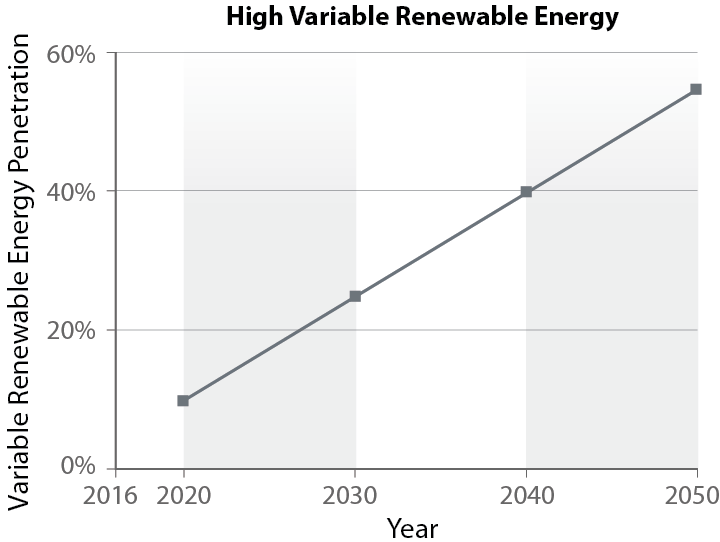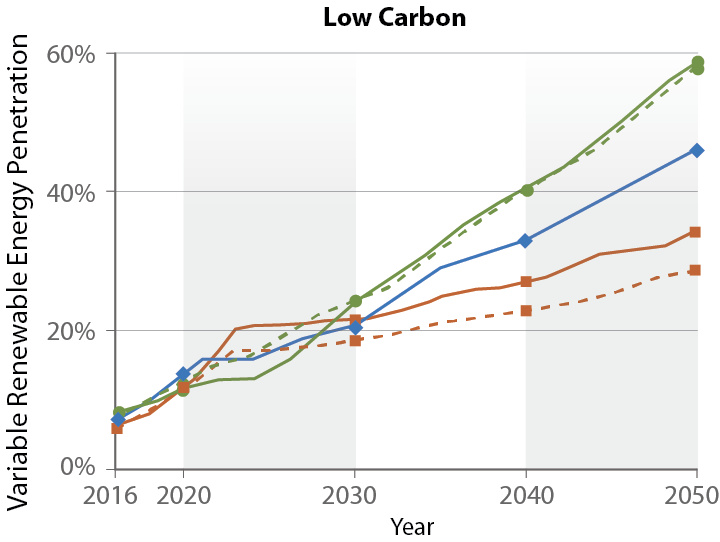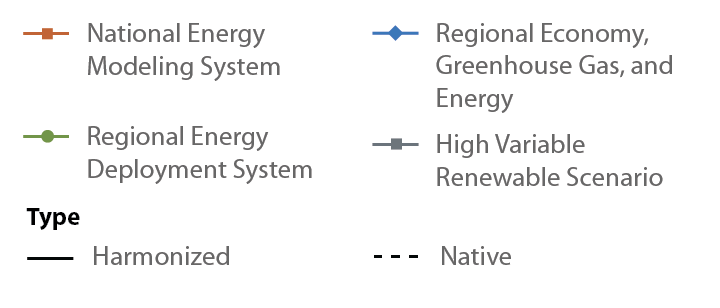Collaboration Works To Improve Variable Renewable Energy Modeling
Structures and algorithms for national-scale power system planning and dispatch models rely on numerous simplifications thanks to their broad scope: country-wide coverage, investment and operational considerations, and long-term (e.g., 2050) horizons. Things become complicated when considering the treatment of variable renewable energy (VRE), such as wind and solar, in these models, as this requires capturing the system-wide impacts of local resources and the effects of variable and uncertain output.
A group of NREL researchers from the Regional Energy Deployment System modeling team—including Trieu Mai, Wesley Cole, Yinong Sun, and Bethany Frew—recently collaborated with expert modelers from the U.S. Energy Information Administration, the U.S. Environmental Protection Agency, and the Electric Power Research Institute to improve the treatment of VRE in the flagship planning models used by these research organizations.
So far, this collaboration has resulted in two reports. The first report, led by Wesley Cole, details how four models from the collaborating organizations treat different aspects of VREs, the numerous experiments that were conducted, the improvements that have been made, and a blueprint to enable further advancements of the models.
"This report is a great reference into the inner working of these long-term models," said Cole.
A second report, published in the journal Energy Economics and led by Trieu Mai, compares scenario outcomes from the NREL, the Energy Information Administration, and the Electric Power Research Institute teams to evaluate the relative importance of input assumptions and model structures. For example, research shows how all models find increasing VRE shares over time under business-as-usual conditions, but the extent of growth varies considerably among models. This variation occurs even when key input data (such as technology costs and fuel prices) are harmonized—suggesting that both inputs and the models themselves can significantly influence outcomes. The team also analyzed "High VRE" and "Low-Carbon" scenarios.
"Collaborative research like this not only helps us improve the accuracy and usefulness of our models, but also enables us to share our methods and expertise with the broader modeling community," Mai said.




Three state-of-the-art electric sector planning models were applied to project the Variable Renewable Energy penetration in the Business as Usual, High Variable Renewable Energy, and Low Carbon scenarios. Differences in modeling integration have significant impact under high penetrations. Results with harmonized (native) input assumptions are shown in the solid (dashed) lines. "Native" and "harmonized" scenarios are identical for the Regional Economy, Greenhouse Gas, and Energy model. Graphic courtesy of NREL.
Last Updated May 28, 2025
